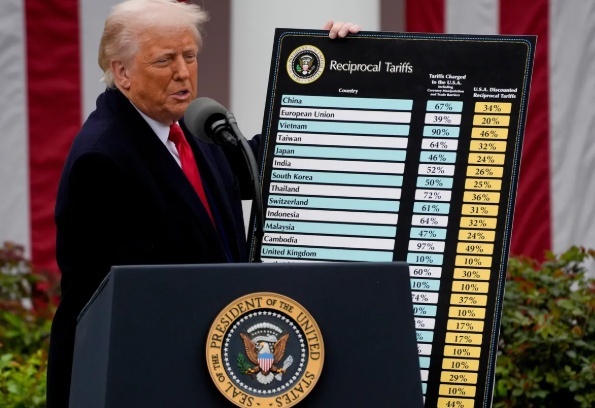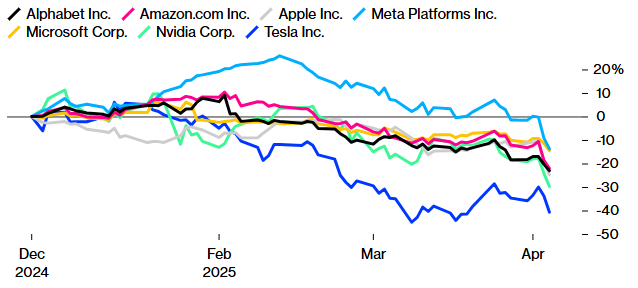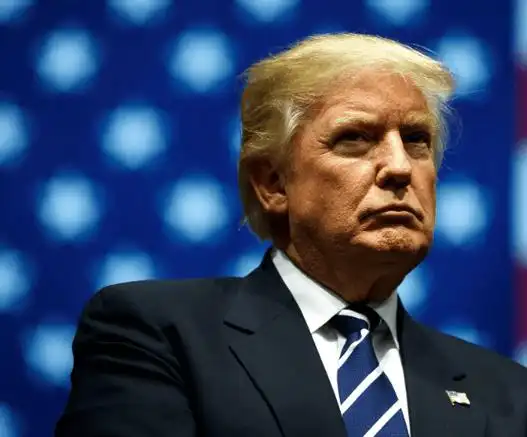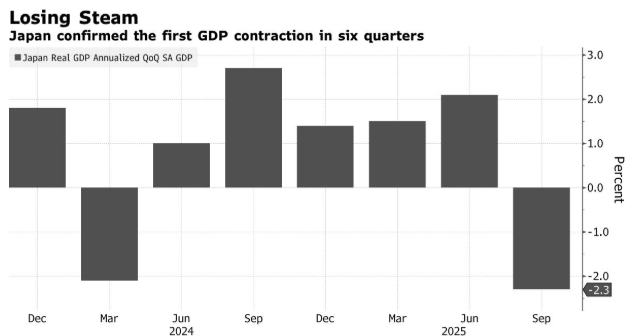The American investor class – the top 10% who own almost all the stocks – is rapidly coming to terms with its diminished status in the era of Donald Trump’s trade offensive. From company executives who calculate stock options to billionaire hedge fund tycoons and everyone in between, they are now collateral damage.
The market crash triggered by Trump last week has gone down in history. The Nasdaq 100 index fell into a bear market; within two days, the market value of all US stocks evaporated by more than 5 trillion US dollars; commodity prices plunged, and corporate bond investors frantically bought insurance contracts to guard against default. Asian stock markets did not ease in the early trading on Monday, and stock index futures fell again. However, most of the losses occurred after Trump announced plans to impose tariffs of up to 50% on dozens of countries, a plan that was so aggressive that almost no one thought it was possible.
All of this comes from a man who, when he first entered the White House, regarded the Dow Jones Industrial Average as a barometer of his popularity. This has left the entire financial community in the country astounded. Why did this happen? What is he doing?
“Over the years, I’ve learned how to deal with stress,” said Richard Steinberg. “But at 4 a.m., I wake up thinking about these things.” Steinberg, a senior wealth advisor at Focus Partners Wealth in Boca Raton, said worried clients keep calling. He tries to calm them down, but he admits that Trump’s approach frustrates him – “very frustrated.” “It lacks a certain degree of maturity.”
In Midtown Manhattan, Jay Hatfield, the CEO of Infrastructure Capital Advisors, felt the same way, but with a tinge of anger. “This is clearly stupid,” he said, referring to the giant tariff chart that Trump displayed at the ceremony last Wednesday as a “death chart.” When he saw it, he told himself to control his anger and just focus on selling risky assets. By the end of Friday, he had cut about 40% of the risky assets from the mutual funds he manages.

No matter what Trump’s ultimate goal is – whether it’s to make America rich again, or to create enough chaos to unfreeze the frozen real estate market, or simply for political calculation that the bloated stock market mainly owned by the rich can withstand the blow – three months after the start of his second term, one thing is certain: the privileged status of Wall Street as a major voting bloc for modern presidents is under attack.
“This is a level five fire,” Hartfield said. “There is no reason at all to start a trade war.”
Trump himself said he was not worried about the turmoil. He recalled his past remarks that market jitters were necessary to right the wrongs of global trade and for the poor workers in America’s “Rust Belt,” who were the biggest contributors to his return to the White House. According to an informed official, privately, he has been expressing the same “stay the course” mantra as in his public statements.
Trump has also been paying more attention to assets other than stocks: the 10-year US Treasury bond (which sets interest rates for home buyers) and oil (which determines prices at the gas pump). As the stock market plunged, both bond yields and oil prices fell. In hindsight, it might seem foolish to cheer for these declines – after all, they were driven by fears that tariffs would tip the economy into recession and send unemployment soaring – but when asked about the market meltdown on Thursday, Trump was quick to point out how happy he was about them.
Treasury Secretary Scott Bessent said in an interview with Tucker Carlson on Friday that “on a long-term chart, you wouldn’t even notice” the recent market decline. “I think what’s happening in the market is more of a Mag-7 issue” – referring to the popular large-cap stocks group – “than a MAGA issue.”

This sell-off is the result of Wall Street’s weeks-long attempt to gauge the severity of Trump’s threats. Andrew Bishop, an analyst at Signum Global Advisors, wrote that there have been more than 20 separate tariff announcements, but most of them have not materialized. Then came the 11% stock market plunge on Thursday and Friday. Wall Street believes that either the time for debate has passed or the losses caused by all the threats of force are too great to recover.
There are many explanations for why Trump is willing to endure such huge market pain. The simplest one is that he and his team truly believe that market turmoil is just a small price to pay for restoring global trade fairness (a point raised in the “Make America Rich Again” initiative) and bringing back factory jobs.
Anthony Pompliano, founder and CEO of Professional Capital Management and a long-time cryptocurrency investor, said: “They say they don’t care about the stock market now. They believe that wealthy investors will be fine. They are very focused on lowering the 10-year Treasury yield, and that’s exactly what they can do.”
Trump has repeatedly advised patience with market volatility, saying that it will seem insignificant compared with the rebound that will follow the restoration of an equal trading status with the United States.
Evan Brown, head of multi-asset strategy at UBS Asset Management, said in an interview: “Investors can understand President Trump’s long-term goals, namely, trying to bring manufacturing back to the United States, trying to increase income to offset potential tax cuts, and protecting industries that are valued for national security reasons.” “But at the same time, people are also aware that this will bring a lot of pain. Market pain, consumer pain, and pain for businesses in this country.”
Many people believe that the stock market should be subject to a reckoning regardless of whether there are new tariffs or not. According to a key indicator, the share prices of the S&P 500 index are higher now than at any time since the dot-com bubble. Moreover, as Besant pointed out, even though there was a sharp drop last week, the stock market rally has remained strong. Over the past decade, the annual return rate has still been around 10% or higher.
Priya Misra, a portfolio manager at JPMorgan Asset Management, said: “The significant rise in the stock market and the accommodative financial environment over the past few years have provided a buffer for Trump. Despite the poor situation last month, we have merely returned to the level of May 2024.”
The sell-off was accompanied by a sharp drop in US Treasury yields and oil prices, which also provided a basis for Trump and Biden to accept market behavior that punishes the rich and eases the constraints on those not working on Wall Street. “Almost half of Americans have no exposure to the stock market and they may actually be happy to see interest rates fall,” said Durham Abric, head of US inflation at Citadel Securities.
However, as many on Wall Street see it, the risk is that the decline in interest rates is a harbinger of economic recession, and worse, that the long-term gains will never materialize. Hartfield said, “This is undoubtedly very bad economic policy.”


